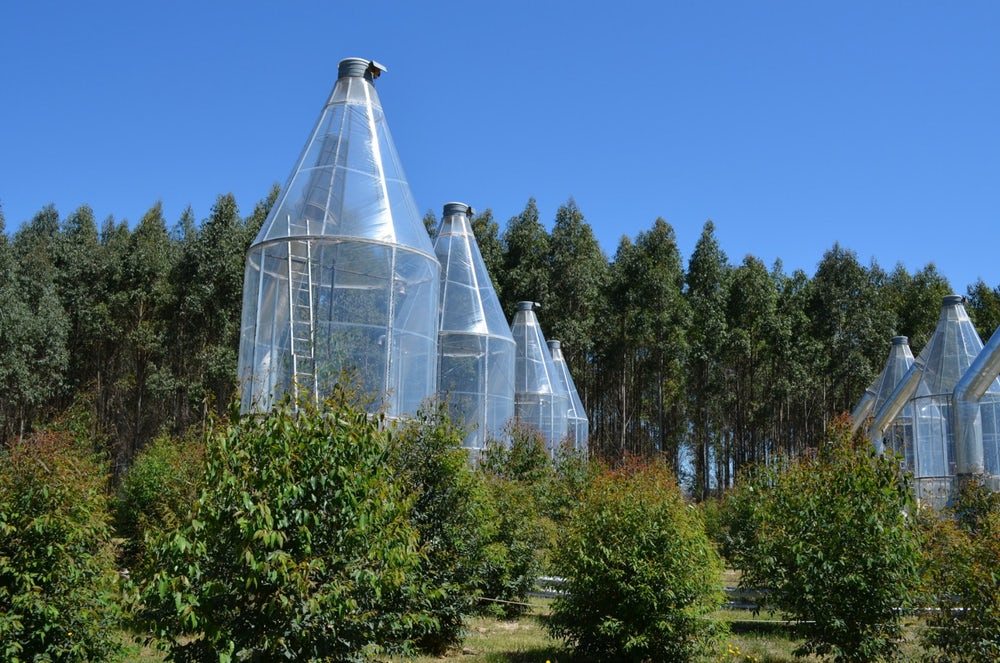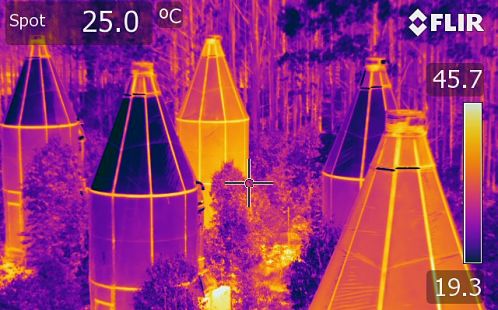Trees Tolerate Extreme Heatwaves by “Sweating”: Study
Heatwaves are a regular climate component in many areas of the world, consisting of several consecutive days of extreme temperatures and a dry atmosphere, often combined with dry surface soils.
Extreme heatwaves generally tend to have devastating effects on the ecosystem. The response of trees to extreme heatwaves is uncertain but important for ecosystem function. Some ecological processes are more sensitive to changes in extremes than to changes in mean values. For example, extreme temperatures combined with prolonged drought have been implicated as drivers of forest mortality.
High temperatures during extreme heatwaves may exceed plant thermal thresholds, leading to direct thermal damage or mortality unless plants can quickly adjust to these extreme conditions. It is not clear, however, whether rapid physiological adjustments in thermal tolerance occur in response to heatwaves in the field, or whether this is an effective protectant during the extreme heatwaves that are predicted to occur in the future.

Now, researchers at the Western Sydney University have uncovered the novel strategies Australian eucalypt trees use to survive
extreme heatwaves. Of their findings, one remarkable process involves the tree evaporating large volumes of water through its leaves in a process similar to sweating.In a year-long experiment, it was demonstrated how trees continue to release water through their leaves as an evaporative cooling system during periods of extreme heat, despite the carbon-fixing process of photosynthesis grinding to a halt.

The study lead, Prof Mark Tjoelker from the University of Western Sydney’s Hawkesbury Institute for the Environment said the findings had significant implications for climate change because they showed that trees stopped capturing carbon during extreme heatwaves, which are predicted to become more frequent and severe in the future.
“If heatwaves occur over a large surface area … clearly the trees and native forests in that area would take up less carbon,” he said. “And if there is an increased frequency of heatwaves that obviously impacts their ability to serve as carbon sinks.”
The Earth has a mechanism in place to help reduce the massive amount of carbon that humans have been emitting into the atmosphere since the pre-industrial era. Oceans, grasslands and trees serve as “carbon sinks” that sucks carbon from the atmosphere. Now, in an ironic twist- the study suggests trees may actually lose their ability to capture carbon during heat waves.

The researchers, based within the Hawkesbury Institute for the Environment, used the unique Whole Tree Chambers located at the University’s Hawkesbury campus to impose a year of warming and then a four-day, high-intensity heatwave on trees local to the Sydney region.
The Whole Tree Chambers are unique in their ability to grow nearly full-height trees (29.5 ft) in a fully controlled environment and to be able to precisely and accurately measure the trees’ rates of photosynthesis and water use. Within the chambers, researchers imposed an additional 3 degrees Celsius on Parramatta Gums (Eucalyptus parramattensis) to simulate the impacts of higher average temperatures in the Sydney region. After 12 months – in which time the trees grew to more than 6 metres – researchers then imposed four days of heat at 43 degrees Celsius.

The observation was that the trees employed different strategies in order to cope with the heat, rather to avoid the damaged due to the heat.
The trees stopped their leaves from reaching critically high temperatures by evaporating large quantities of water, in a process called transpiration that is akin to sweating. Under dry conditions, plants would normally stop transpiring in order to conserve water. In heatwaves, in contrast, trees must keep using water to avoid leaf damage from burning.
To maintain the high rates of transpiration, the trees sourced water from throughout the soil profile, to depths of 1.5 metres and below, demonstrating the efficiency with which eucalypts find and extract water.
Further, the trees even rapidly increased their high-temperature tolerance. Within 24 hours of the start of the heatwave, the threshold temperature at which leaves start to become damaged had increased by 2 degrees Celsius.
“What normally happens is that a tree’s use of water and its rate of photosynthesis are closely related and this process is the basis of how scientists predict what the effects of a warmer Australia on trees and forests will be,” explains Professor Mark Tjoelker.
“Under these extreme temperatures, this relationship changes completely – the trees can no longer photosynthesise, but they continue to use a lot of water to keep their leaves from reaching damagingly high temperatures. In addition, the ability to increase the high-temperature tolerance of their leaves helps to explain how eucalypts cope with heatwaves that would burn the leaves of other species.”

Dr John Drake, formerly of the Hawkesbury Institute for the Environment and now a researcher at the College of Environmental Science and Forestry in the United States, explains that there is a limit to all plants’ ability to adjust to heat even if some species adapt better than others.
“We were surprised how well these eucalypts acclimated to the heatwaves and maintained their function,” says Dr Drake.
“This indicates that eucalypts can tolerate elevated temperatures and significant heatwave events as long as they have access to water. If heat and drought combine, then we may see more damage occurring and the potential for tree mortality”, he says.































